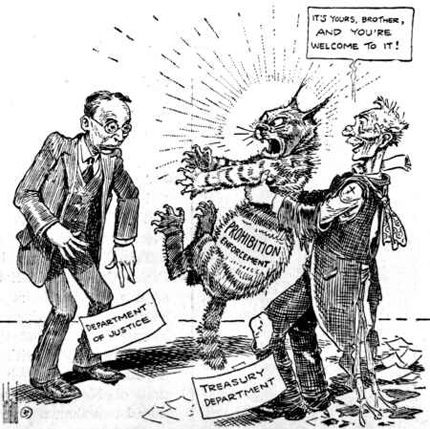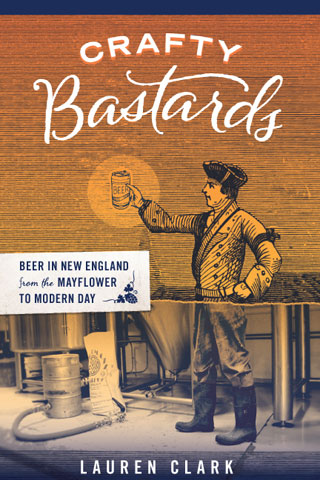March 13th, 2010
Little known facts about Prohibition

Anyone out there know if there’s a good college class on Prohibition? I would sign up for it. There is so much interesting stuff about big-P Prohibition (1919-1933) and various small-P prohibitions that just isn’t part of Americans’ knowledge of history (OK, there’s a lot lacking in Americans’ knowledge of history, but I’ll let another blogger tackle that). I did not know, for instance, until I read The Chemist’s War in Slate that there was a federal program to poison alcohol.
“Frustrated that people continued to consume so much alcohol even after it was banned, federal officials had decided to try a different kind of enforcement. They ordered the poisoning of industrial alcohols manufactured in the United States, products regularly stolen by bootleggers and resold as drinkable spirits. The idea was to scare people into giving up illicit drinking. Instead, by the time Prohibition ended in 1933, the federal poisoning program, by some estimates, had killed at least 10,000 people,” writes Deborah Blum. If it’s even close to being accurate, that number’s astonishing.
Prohibition-era President Calvin Coolidge, who had already, as governor of Massachusetts, made a name for himself by cracking down on striking Boston cops, showed his characteristic zeal for maintaining law and order by turning to “chemistry as an enforcement tool.” Wow, way to go, Silent Cal. Imagine if that sort of zeal was ever applied to enforcing regulations governing high finance… Ah, well. Then as now.
Equally as fascinating as the dark episode above: We think of Massachusetts as a pioneer in everything from establishing the New World to declaring independence from the Old World to letting gay people marry to mandating universal health insurance. But few people know that the Bay State was also a pioneer in prohibition. According to Perry R. Duis’ study The Saloon: Public Drinking in Chicago and Boston, 1880-1920, Massachusetts was the first to enact statewide prohibition, which, except for the years 1868 and 1871-3, lasted from 1852 to 1875. Of course, we had about as much success with our own noble experiment as the entire nation did some decades later. Duis writes:
“The wets claimed that arrests for drunkenness had not really declined as dramatically as citizens had earlier believed. Alcohol was obviously being produced or imported, and a secret distribution system placed it in the hands of thousands of drinkers… Charity workers and city missionaries worried aloud about the social problems that came from… secret consumption. Tenement doors concealed drunkenness, wife beating, and child abuse… Under license, the quality and purity of liquor could be regulated; now, inspection was virtually impossible.”
And on and on. See you in class.
Permalink | Filed under Books & resources | Tags: 1920s, Calvin Coolidge, Massachusetts prohibition, Perry Duis, poison alcohol, Prohibition

March 13th, 2010 at 7:11 pm
Actually, that poisoning spell most reminds me of the proposal Orrin Hatch had a few years ago to release viruses to destroy the computers of people who downloaded music illegally. While an equally stupid proposal, at least that one wouldn’t murder people…
March 14th, 2010 at 3:22 pm
Some fascinating stuff indeed! Wondering if in years to come we may look back on our current times as being the “prohibition era” for many of the things that are considered illegal today.
March 15th, 2010 at 4:25 pm
“Dry Manhattan” by Michael Lerner is a good account of Prohibition in New York City.
Mod Betty, I agree, we’re definitely living in a prohibition era for many other intoxicants, only now the stakes are much higher. Drug prohibition as it’s playing out in Mexico today makes Al Capone’s Chicago look like Disneyland, and in the U.S., it’s basically the new Jim Crow.
Let’s hope we’ll apply the lessons learned from alcohol Prohibition to the way we deal with other substances — if not for human rights and public health, then at least for the cocktail potential of long-lost ingredients like coca wine.
And the funny thing is, Coca Cola, back when it contained cocaine, was marketed as a “temperance” drink. Say no to booze, say yes to blow.